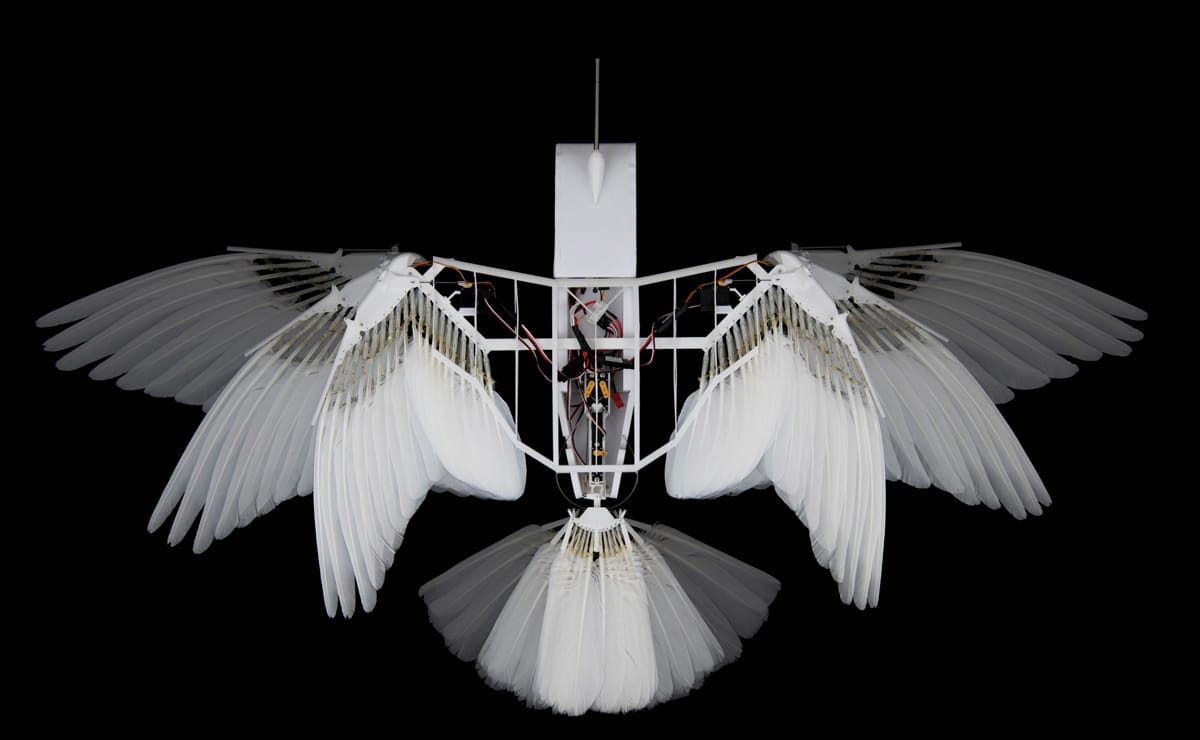Aircraft typically use a vertical tail to keep the craft from rolling or yawing. Birds, on the other hand, maneuver their wings and tail feathers to counter unwanted motions. Researchers found that the list of necessary adjustments is quite small: just 4 for the tail and 2 for the wings. Implementing those 6 controllable degrees of freedom on their bird-inspired PigeonBot II allowed the biorobot to fly steadily, even in turbulent conditions, without a rudder. Adapting such flight control to the less flexible surfaces of a typical aircraft will take time and creativity, but the savings in mass and drag could be worth it. (Image credit: E. Chang/Lentink Lab; research credit: E. Chang et al.; via Physics Today)
Tag: flight control

Skydiving Salamanders
The wandering salamander can spend its entire 20-year lifespan in the canopy of a coast redwood. When predators come calling, they have a special skill that helps them get away: skydiving. These little amphibians have no webbed appendages and no wings, but they’re some of the most skillful skydivers out there. By carefully repositioning its tail and feet, a wandering salamander controls its pitch, yaw, and roll. It’s not only able to orient itself as it falls; it can actually steer itself to a safe landing! Other salamander species, as seen in the video above, do not share this skill. Check out the full Deep Look video to see these incredible gliders in action. (Video and image credit: Deep Look; see also C. Brown)

Hovering Hawk
Birds have a level of control in flight that would make any engineer jealous. This 2021 Audubon Photography Award winning video by Bill Bryant shows off the skills of a red-tailed hawk. On this occasion, the hawk is using strong winds coming off the Rocky Mountains to hover in place. Notice how active his wings and tail are in adjusting to the changes in the wind while his head is perfectly still. With his head still, the hawk can scan the ground for mice and other prey. It’s absolutely incredible to see how effortlessly the hawk is accounting for unsteadiness in the wind here! (Video and image credit: B. Bryant; via Audubon)


Bumblebees in Turbulence

Bumblebees are small all-weather foragers, capable of flying despite tough conditions. Given the trouble that micro air vehicles have when flying in gusty winds, bumblebees can help engineers to understand how nature successfully deals with turbulence. Under smooth laminar conditions like those shown in the animation above, bumblebees stay aloft by beating their wings forward and backward in a figure-8-like motion. On both the forward downstroke and the backward upstroke, you’ll notice a blue bulge near the front of the bee’s wing. This is a leading-edge vortex, which provides much of the bee’s lift.
Researchers were curious how adding turbulence would affect their virtual bee’s flight. The still image above shows the bee in moderate freestream turbulence (shown in cyan). Surprisingly, this outside turbulence has very little effect on the flow generated by the bee, shown in pink. In fact, the researchers found that the bees could fly through turbulence without a significant increase in power. Too much turbulence does make it hard for the bee to control its flight, though. The bee’s shape makes it prone to rolling, and the researchers estimated, based on a bee’s 20 ms reaction time, that bumblebees can probably only correct that roll and maintain controlled flight at turbulence intensities less than 63% of the mean wind speed. (Image credits: T. Engels et al., source; via Physics Focus)







